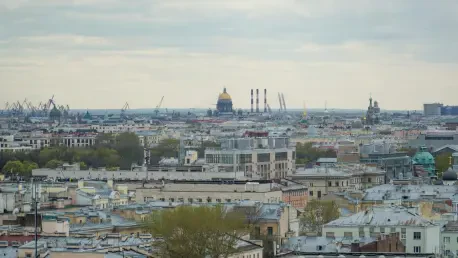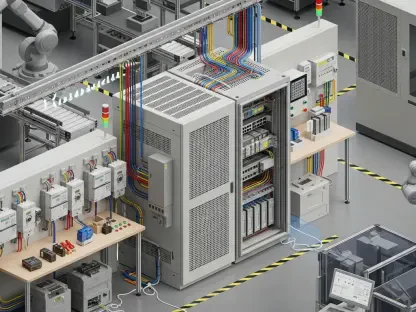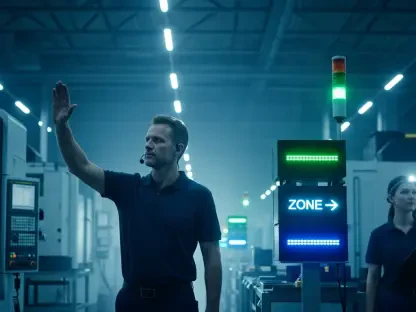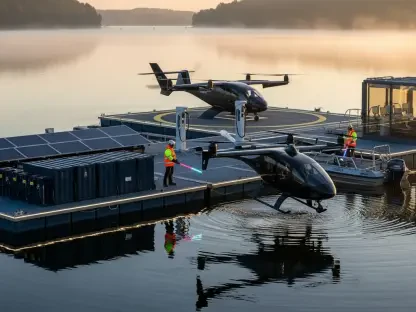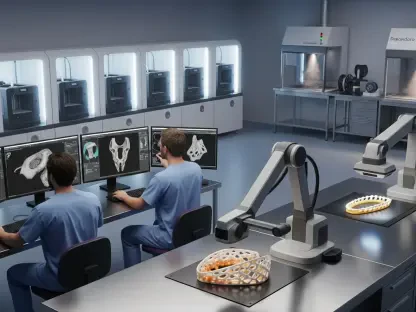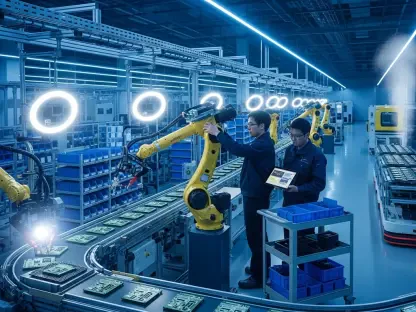In a stark reflection of economic hardship, Russia’s industrial sector grapples with a staggering decline in cargo volumes, with freight railcar demand plummeting as exports falter under the weight of international sanctions. This crisis underscores a critical turning point for a nation historically reliant on heavy industry and defense manufacturing. Understanding the complexities of industrial restructuring in Russia is vital, especially amid heightened geopolitical tensions and economic isolation that amplify the stakes for state-backed enterprises. This analysis delves into the specific struggles of key players like Uralvagonzavod (UVZ), a major manufacturer of tanks and railcars, while exploring broader trends shaping the sector’s trajectory, from declining markets to strategic shifts in production focus.
Economic Pressures Driving Industrial Restructuring
Declining Demand and Export Disruptions
Russia’s industrial backbone is buckling under the strain of reduced cargo volumes, a trend that has severely impacted the demand for civilian products such as freight railcars. Reports indicate a sharp drop in export activity, largely driven by Western sanctions that have restricted market access for many state-controlled firms. These restrictions have disrupted traditional trade routes, leaving companies struggling to find alternative buyers for their goods in an increasingly isolated economy.
The ripple effects of these disruptions are evident across multiple sectors, with manufacturing giants facing unprecedented financial pressure. Sanctions targeting entities involved in military production have further compounded the issue, limiting their ability to offset losses through international sales. This economic squeeze has forced a reevaluation of operational models, pushing firms toward cost-cutting measures to survive the downturn.
Case Study: Uralvagonzavod’s Operational Adjustments
Uralvagonzavod, a cornerstone of Russian industrial might, has initiated significant restructuring efforts to navigate these turbulent times. Plans to reduce staff by up to 10% across various departments by February of the following year signal a stark response to mounting losses in civilian production. Additionally, some employees have been shifted to a four-day workweek, a move aimed at curbing labor costs while maintaining a semblance of operational continuity.
Despite these cutbacks, UVZ remains committed to high-intensity defense production, prioritizing state orders for military hardware like T-90M battle tanks and modernized T-72B3M models. This dual focus highlights a strategic pivot, where resources are funneled into military output even as civilian sectors suffer. The contrast between sustained defense commitments and shrinking commercial markets paints a complex picture of adaptation under pressure.
The broader implications of UVZ’s adjustments reveal a delicate balancing act. While administrative and management expenses are targeted for optimization, the tangible impact on the workforce raises questions about long-term sustainability. This restructuring, though framed as a necessary adjustment, underscores the acute challenges of maintaining industrial relevance amid external and internal constraints.
Expert Insights on Russia’s Industrial Challenges
Industry analysts point to systemic issues plaguing Russian industrial giants, with weakening domestic demand emerging as a persistent hurdle. The war-driven economic slowdown has stifled consumer and commercial activity, leaving companies with excess capacity and dwindling revenue streams. This environment has made it increasingly difficult for firms to justify full-scale operations, prompting widespread cost reductions.
Beyond UVZ, the trend of furloughs and layoffs extends to other critical sectors like automaking and mining, reflecting a shared struggle across the industrial landscape. Experts note that geopolitical isolation exacerbates these difficulties, as limited access to global markets hinders diversification efforts. The consensus is clear: without significant policy shifts or international relief, the sector faces a prolonged period of contraction.
These insights highlight a deeper structural malaise, where short-term survival tactics may undermine long-term growth prospects. Analysts caution that over-reliance on state support and defense contracts could distort industrial priorities, leaving civilian markets underserved. This dynamic poses a critical challenge for policymakers seeking to stabilize the economy while navigating global headwinds.
Future Outlook for Russian Industrial Restructuring
Looking ahead, the trajectory of Russia’s industrial sector remains uncertain, with restructuring efforts like those at UVZ potentially serving as either a stabilizing force or a precursor to deeper cuts. If current measures fail to restore financial health, further downsizing could become inevitable, particularly in firms heavily exposed to civilian markets. Conversely, successful optimization might provide a blueprint for other companies facing similar dilemmas.
Sustained sanctions and geopolitical isolation are likely to stifle industrial innovation and restrict access to vital resources and technologies. While some argue that this could foster self-reliance and domestic ingenuity, the challenges of limited capital and expertise loom large. Balancing these constraints with the need for modernization will be a defining issue for the sector in the coming years, from 2025 to 2027 and beyond.
The prioritization of defense production is poised to shape long-term strategies, potentially at the expense of civilian economic growth. As resources are diverted to military needs, sectors like railcar manufacturing may face chronic underinvestment, risking further market erosion. This trend raises critical questions about the sustainability of an industrial model so heavily tilted toward state-driven imperatives, with implications for both economic resilience and social stability.
Conclusion and Call to Action
Reflecting on the challenges faced by Russia’s industrial sector, it becomes evident that entities like Uralvagonzavod have had to implement stringent cost-cutting measures, including staff reductions and adjusted work schedules, to cope with declining demand for civilian products. The broader struggles of declining markets and export disruptions paint a grim picture of an industry under siege from both internal economic woes and external geopolitical pressures. These difficulties underscore a pivotal moment in the nation’s economic history, where adaptation is not just necessary but urgent.
Moving forward, stakeholders must prioritize innovative solutions to diversify industrial output and reduce dependency on volatile defense contracts. Exploring new domestic markets and investing in technology to enhance efficiency could serve as vital steps toward recovery. Additionally, fostering international dialogue, where feasible, might mitigate some effects of isolation, opening pathways for gradual reintegration into global trade networks over time.
